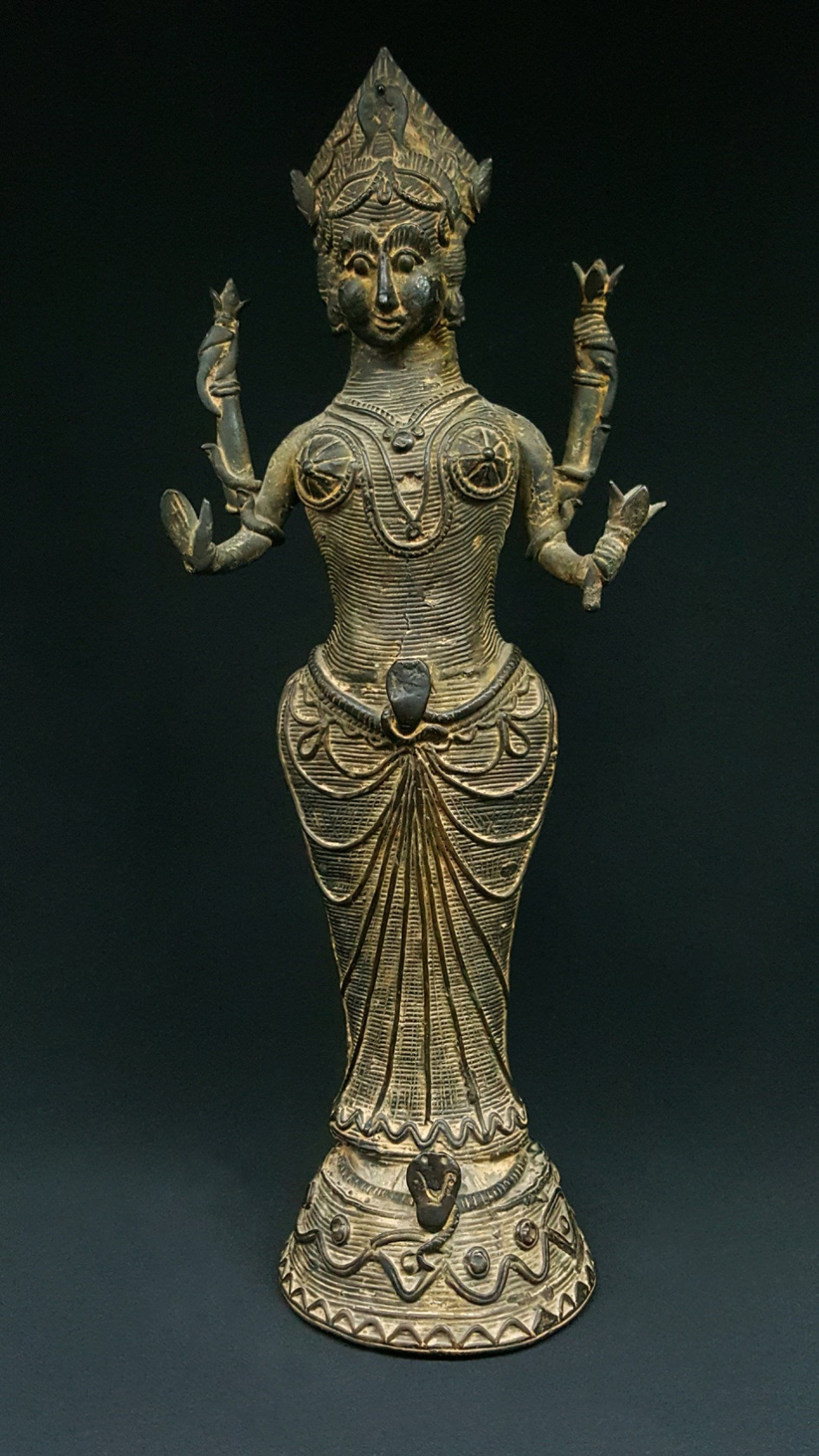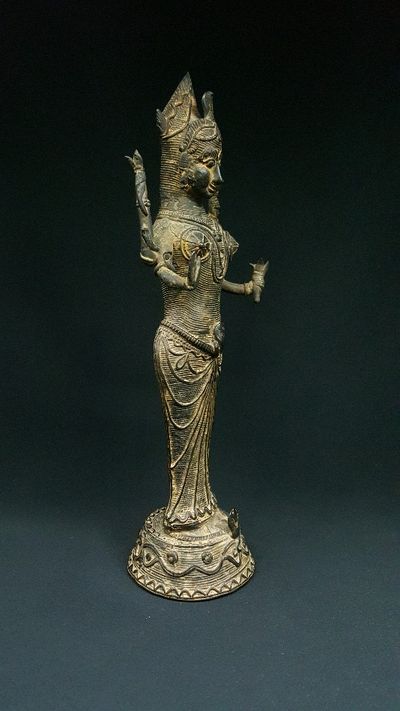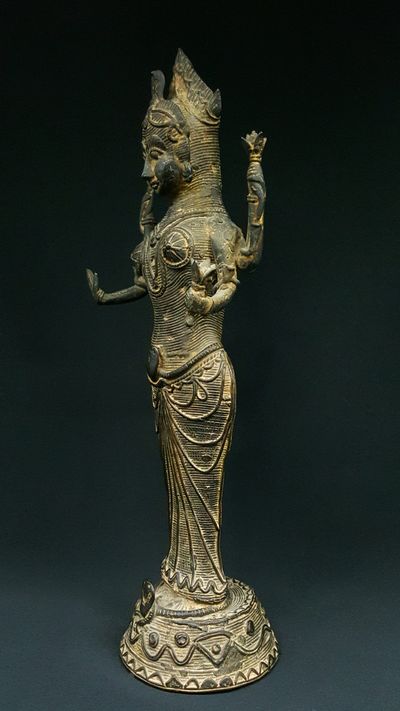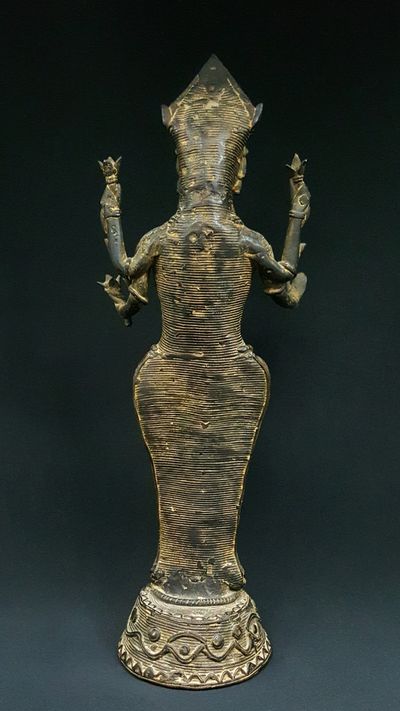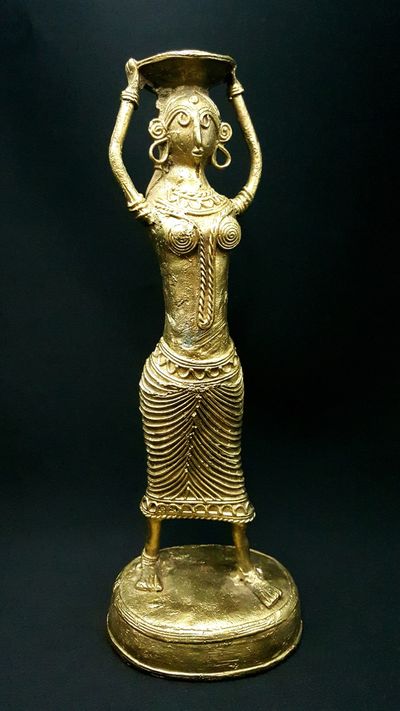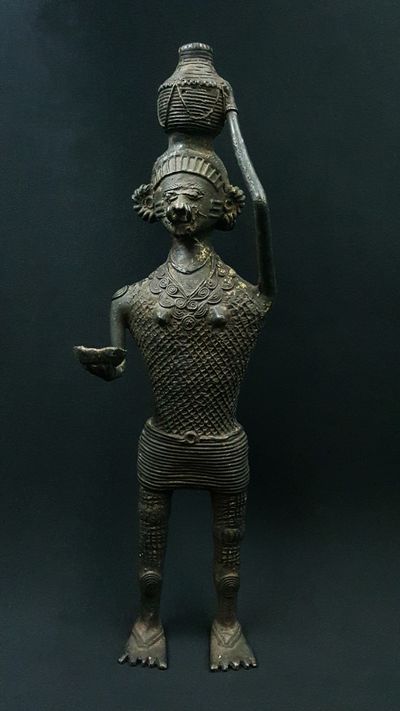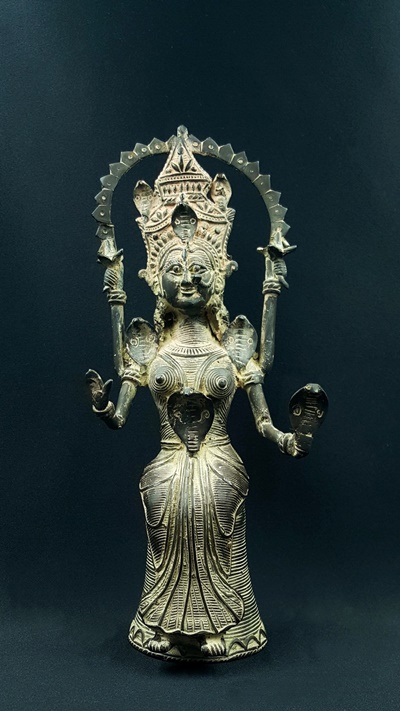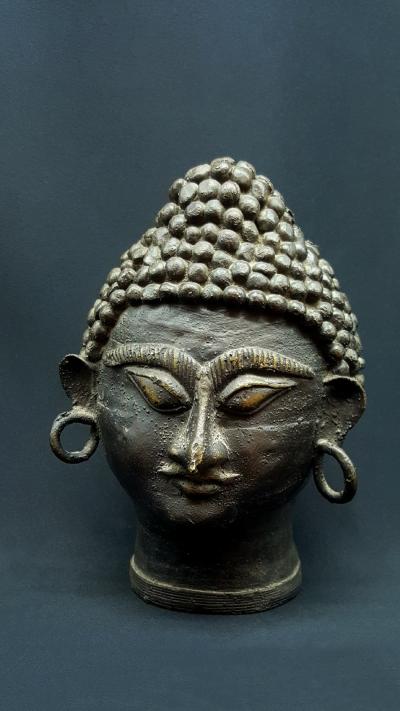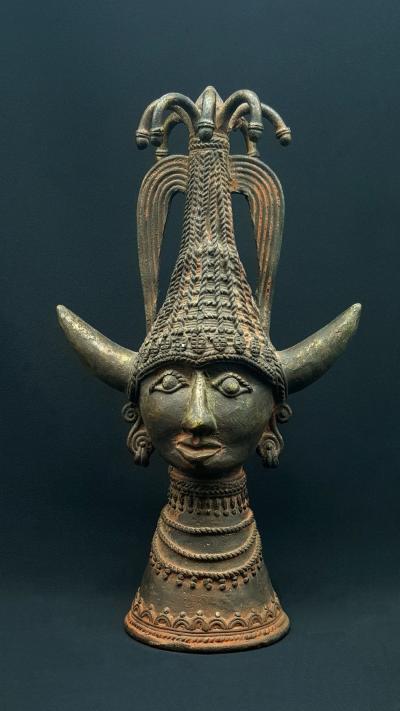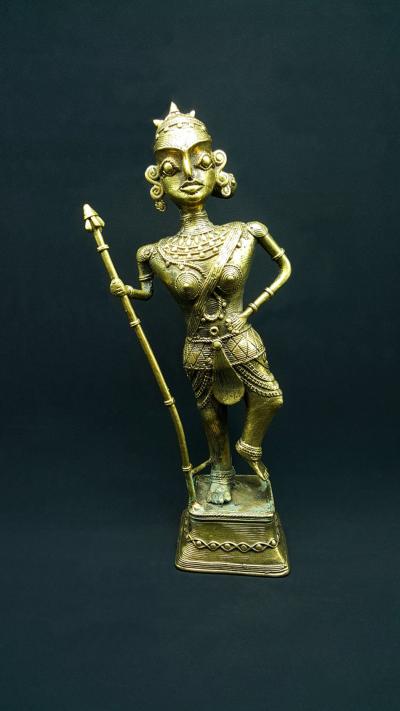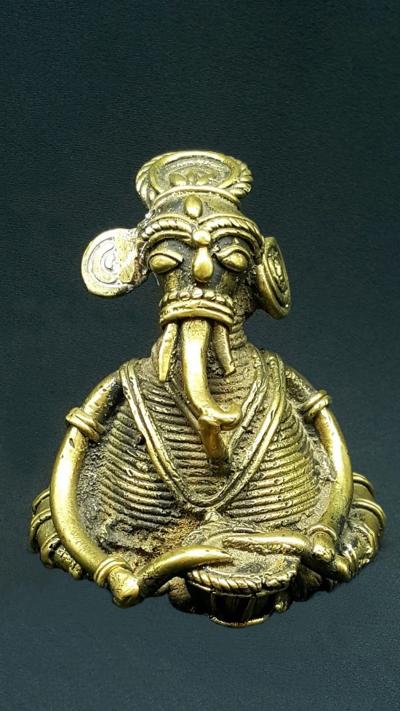Statue Lakshmi Odisha
La prospérité
€290.00
Magnifique statue de Lakshmi exprimant la plénitude et la fertilité : attitude sobre, geste de bénédiction et nagas pour accentuer son aspect richesse et fertilité. En savoir plus...
Hauteur : 27 cm
Poids : 0,880 Kg
Art tribal
Technique de la cire perdue - Alliage cuivreux
Origine : Odisha - Inde
Livraison gratuite UE, Norvège et Suisse
Description
L'art tribal Indien
Les tribus, pratiquant l'art Dokra, sont originaires de la région de Bastar, dans l'Inde du Sud (aujourd'hui situé dans l'État de Chattisgarh), elles ont émigré plusieurs siècles auparavant et se sont installées un peu partout en Inde du Nord au Sud.
La plupart ont gardé leur tradition (art culinaire, vestimentaire, fêtes...) et leur religion animiste.
L'art Dokra : un savoir millénaire dans la fabrication de statues
Cet art tribal indien artisanal n'a pas changé depuis des millénaires (+ de 4000 ans) et la technique utilisée est toujours celle de la cire perdue : un modèle grossier en argile est réalisé puis recouvert de cire par l'artiste qui va lui donner sa forme définitive avec ses détails. L'ensemble est à nouveau recouvert d'un mélange argileux puis chauffé dans un foyer ouvert où un alliage cuivreux sera coulé. Voir Blog
Les objets produits par les artistes Dokra peuvent être de nature usuels : coupelle, bougeoir... des instruments de musiques (cuivres), ou bien artistiques tels que des bijoux, des animaux : chevaux, éléphants, tortues..., des statues d'hommes et femmes représentant des scènes de vies quotidiennes et des divinités hindous adoptées par les tribus : Ganesh, Lakshmi, ...
Posture Debout(Samabhanga) dans une attitude d'équilibre, le poids idéalement réparti sur les 2 jambes.
Gestes Trois bras sont relevés, tenant dans chaque main un lotus. Le lotus symbolise le sein maternel (origine de la vie), la sagesse : la connaissance qui mène à l'éveil, la pureté (et donc la transformation qui permet l'expression de la beauté dans un milieu marécageux), la paix. La main droite fait le geste de protection.
Piédestal Les dieux ne touchent jamais le sol : la terre est le domaine des êtres de chair et de sang.
Habituellement, Lakshmi est représentée sur un lotus, mais sur cette statuette un serpent entoure ses pieds.
Couvre-chef Couronne en forme tiare (Kiritamukuta) - symbole de royauté. Un serpent orne le front de Lakshmi tel un diadème.
Habillement Ceinture représentée par un serpent et simples bandes bustières.
Attributs et armes Le serpent (naga) : ici cette statue de Lakshmi, en plus du lotus qui est son emblème essentiel, est sculptée avec de nombreux serpents.
Le serpent est très important en Inde et bénéfique : il est le symbole de la fertilité, de vie (Shakti), de renouvellement permanent (mue) donc de l'immortalité.
